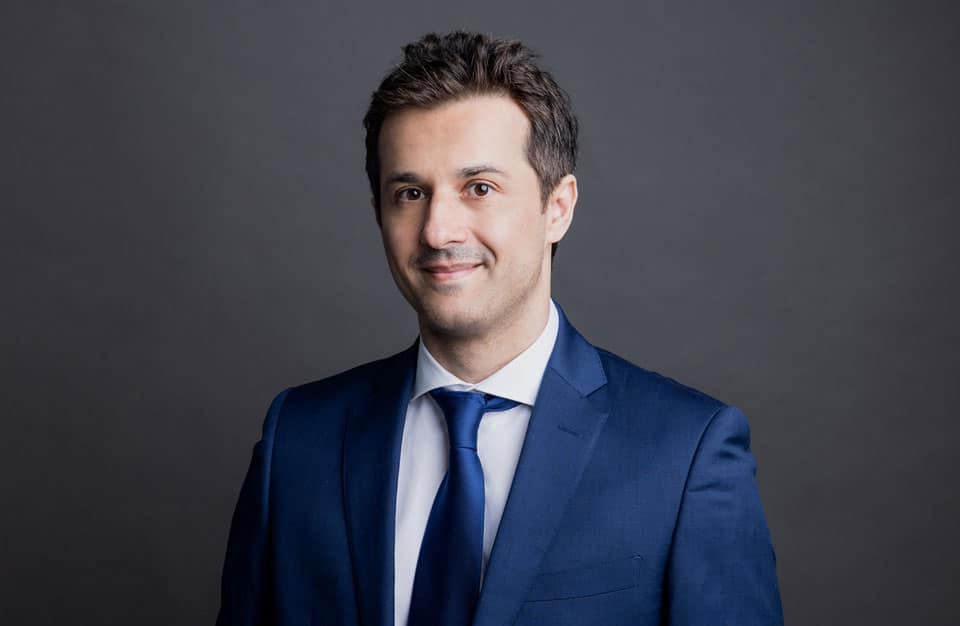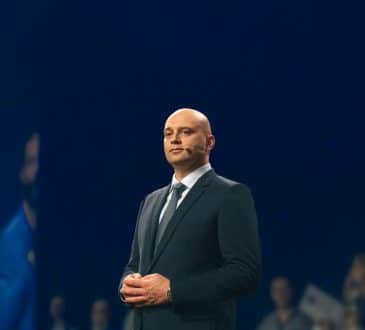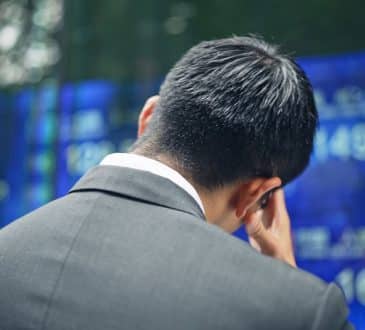How Generative Ai will Transform Animated Video Production – An Interview with Alex Safavinia

First off, tell us about yourself and your background?
Hello, I’m Alex Safavinia, serving as CEO at Kasra Design® (Explainer Videoly Pte. Ltd). My professional journey began in 2009 following my education in creative multimedia. At that time, the animation industry was experiencing a surge in demand, particularly for animated videos within the business and Silicon Valley startup sectors.
Recognizing this opportunity, I established a company to meet the growing need for animation services. Over time, we expanded our operations, forging partnerships with Fortune 500 companies and establishing a second office in Singapore. It’s been a fulfilling journey witnessing the evolution of animation and its widespread adoption in various industries.
What is the latest generative AI Sora (by OpenAi) that everybody is talking about?
OpenAI’s latest creation, Sora, has truly caught the attention of many in our industry, including myself. It’s an AI-powered tool that allows users to generate videos simply by describing a scene in text. This means you can input your ideas, hit enter, and watch as Sora brings them to life – whether it’s through animated sequences or live-action footage. It’s an incredible leap forward in content creation, making it easier than ever to produce high-quality videos quickly and efficiently.
What’s fascinating about Sora is its ability to interpret abstract concepts and turn them into visually compelling content. You can describe even the most complex scenes in plain language, and Sora will intelligently generate the corresponding video. However, as with any disruptive technology, there are questions and discussions within the creative community about the implications of AI-generated content.
As someone deeply rooted in the animation industry, I welcome the advancements Sora brings, but there’s also a sense of apprehension about how it might reshape our field. It raises important considerations about traditional production methods and the role of human creativity in this new AI-driven landscape.
What were the challenges in the animated video production industry prior to the appearance of AI generated content?
One of the biggest challenges in the animated video production scene is finding the right talent. It’s like searching for a rare gem in a sea of rocks. And let me tell you, it’s no walk in the park, especially depending on where you’re hiring. The animation industry thrives on skilled individuals who can bring creativity and technical expertise to the table. But the reality is, not everyone is born with that natural knack for animation, despite the plethora of schools and courses churning out graduates left and right. In fact, only a small fraction, maybe around 10%, possess the combination of talent, skill, and dedication needed to truly excel in this field on a global stage.
Now, let’s talk about educational institutions. While many of them do a great job teaching the fundamentals of animation, they often fall short when it comes to providing students with the practical, real-world skills required to thrive in the industry.
This disconnect between academia and the demands of the professional world leaves many graduates ill-prepared to hit the ground running in their animation careers. Consequently, animation companies are faced with the challenge of bridging this gap by investing significant time and resources into training and mentoring fresh graduates.
It’s not just about teaching them the technical aspects of animation; it’s about instilling in them the creative vision, problem-solving abilities, and teamwork skills necessary to succeed in a highly competitive and dynamic industry. So, while finding and nurturing talent may be a daunting task, it’s absolutely essential for the continued growth and success of the animation industry.
Should 2D & 3D animators and animation companies in general be worried about SORA abilities?
I’ve been thinking about SORA and what it could mean for us animators. The thing is, we’re not quite sure what to make of it yet. I mean, sure, the demos are impressive, but we don’t really know the full extent of what it can do or how much control we’ll have over our creations.
Should we be worried? Well, it’s a bit of a mixed bag. On one hand, there’s the issue of project ownership. If our work gets stored in some database, who’s to say it won’t be replicated by anyone who gets access? That could seriously stifle our ability to innovate. Plus, let’s not forget about the importance of individual creativity. Not everyone has the knack for crafting animations that truly resonate with a business’s needs.
But hey, let’s not jump to conclusions just yet. While SORA might shake things up a bit, we’ve yet to see a software that consistently churns out top-notch animations. And who knows, maybe it’ll even help us speed up concept development and production. As for its impact on job availability in the animation industry, well, that’s anyone’s guess at this point. But one thing’s for sure – if SORA or any similar AI tools start taking over, it might just discourage the next generation of aspiring artists. And that’s something we need to keep an eye on.
Many are concerned about the copyright aspect of AI generated content, being driven from artists’ artworks that is fed to the AI. What do you think about that?
It’s a concern that’s been buzzing around quite a bit lately and for good reason. The issue at hand revolves around the copyright implications of AI-generated content, particularly concerning the use of artists’ works as training data for AI systems. It’s a bit of a murky area, mainly because AI companies have been rather tight-lipped about the specifics of their training processes. Without transparency from these companies, it’s difficult to ascertain the extent to which copyrighted materials are being utilized in training AI models.
One noteworthy aspect is how these AI systems operate when given prompts referencing specific artists. If you mention an artist’s name in your AI prompt, the system can generate content mimicking the style of that particular artist.
This functionality raises concerns about the potential incorporation of copyrighted works into the AI’s training dataset. While it’s true that the AI-generated content may not be an exact replica of the original artwork, there’s still a valid debate about whether such usage constitutes copyright infringement.
On the flip side, AI companies might argue that their AI-generated content isn’t a direct copy of any specific artwork, thus sidestepping copyright issues. However, this argument raises questions about the nuances of copyright law and the ethical considerations surrounding the use of artists’ works in AI training.
Ultimately, there’s a pressing need for regulatory oversight and guidance in this area. Governments and institutions must play a proactive role in evaluating the practices of AI companies and establishing clear guidelines to protect artists’ rights and ensure ethical use of copyrighted materials in AI development. Without proper regulations in place, there’s a risk of exploitation and manipulation of artists’ works, which could have far-reaching implications for the integrity of the creative industry as a whole.
Do you see an upside to this rapidly progressing technology in your industry?
You bet. There’s definitely an upside to this rapidly advancing technology in our industry. Take, for instance, the integration of AI tools like Sora into professional software platforms like After Effects or Cinema 4D. It’s a game-changer, really. By equipping designers and animators with the power to swiftly create and fine-tune 3D models or 2D animations, we’re able to streamline the content creation process like never before.
Let me break down the possibilities for you. Picture this, hours of painstaking work to model a complex 3D object will be accomplished in a matter of minutes with the help of AI such as Sora integrated into a 3D software. And that’s just scratching the surface.
Imagine whipping up a hand-drawn, frame-by-frame animation using Sora in a post production software like Adobe After Effects or Adobe Photoshop in a single day, compared to the month-long endeavor it would typically require. It has the potential to boost efficiency and productivity significantly.
Has the current AI products (Midjourney, DALL-E etc) affected your current sales in any way?
Not at all. In fact, we’ve embraced using AI in our workflow to streamline our pre-production process. Instead of relying solely on manual methods, we’ve integrated AI to help us create mood boards and conceptual ideas that perfectly match our clients’ needs. It’s been a real game-changer for our team, saving us time in gathering and presenting concepts before we dive into production.
And let me tell you, since incorporating AI, the quality of our mood boards has significantly improved. No more generic samples from our library or internet. With AI assistance, we’re now producing mood boards that precisely address our clients’ requests.
What is your advice for aspiring animators who see their future job is threatened by AI?
I’d say it’s premature to label it as a threat just yet. However, my advice would be to dive headfirst into learning about AI and seizing every opportunity to experiment with new AI platforms that come your way. While AI may automate certain tasks within the animation industry, remember that it still requires an artist’s creative direction to truly come to life. Plus, who knows? AI integration might become a standard feature in animation software sooner rather than later. So, my advice is to stay curious, adapt to new technologies, and keep refining your artistic skills—it’ll serve you well in the long run.
Furthermore, it’s crucial to emphasize the irreplaceable role of creativity in animation. Collaborating with AI tools can enhance productivity, but the unique perspectives and creative input of human animators remain paramount. As the industry evolves, continuous learning and adaptation are key. Animators should diversify their skills, including understanding AI algorithms, to remain competitive. Additionally, ethical considerations regarding job displacement and copyright issues should be addressed to ensure responsible AI integration in animation.
Countries starting to regulate AI around the world, what do you think about that?
The rise of AI regulation feels like a necessary step forward, almost like a growing pain. With voices like Elon Musk warning of the potential dangers of uncontrolled AI, regulations act as guardrails, guiding its development responsibly. This shift allows us to prioritize AI that’s centered around humans, aiming to uplift society rather than pose risks. While rules might slow down cutting-edge progress slightly, they could very well prevent us from encountering major pitfalls down the line. It’s a bit tricky, but it’s all about paving the way for a future where AI is a safe and transformative ally for humanity.
In my opinion, finding this balance between innovation and rules is crucial. Working together among governments, industry leaders, and stakeholders is essential for creating effective rules that can change with the quickly evolving AI landscape. Additionally, ethical considerations surrounding AI deployment are a big focus, emphasizing the importance of being clear, accountable, and fair in AI systems. Overall, most people in the field agree that rules are vital for ensuring that AI grows responsibly and gets used in the right way.
Is your company currently using any AI generation tools as part of your pipeline?
Yes, our team actively explores and uses AI generation tools into our pipeline, particularly in the pre-production phase. Tools such as Midjourney and Stable Diffusion play a pivotal role in developing concepts and mood boards for our clients, expediting the approval process significantly. What used to take 1-2 weeks can now be accomplished in a matter of days, thanks to the efficiency of AI-driven workflows. Moreover, these AI tools have elevated the overall quality of our mood boards, resulting in quicker client approvals.
We use AI-generated images for our Collage animations. Rather than scouring stock websites in the hopes of finding suitable photographs in terms of angle and composition, we utilize AI to create precisely what we need. With AI, we can generate custom images and seamlessly remove backgrounds, streamlining the production process for collage animations. Overall, the integration of AI tools has proven to be a valuable asset, enhancing both efficiency and output quality in our workflow.
Looking ahead, what is your vision for the future of animation, and how do you see technology and storytelling intersecting to push the boundaries of creative expression?
Looking ahead, I’m really excited about where animation is heading, but there are also some concerns lingering in the back of my mind. With all the cool tech stuff coming up, like AI-powered tools such as Sora, it feels like the possibilities are endless. I mean, on one hand, these tools are making animation creation way more accessible for everyone, not just the pros. It’s like a whole new world opening up for artists from all walks of life, and that’s definitely something to celebrate.
But at the same time, there’s this worry about whether these advancements might put animators out of a job. It’s a real concern, you know? Like, if AI can generate videos just by inputting text descriptions, what does that mean for the folks who’ve spent years honing their craft? It’s a bit scary to think about. However, when we look at other technological advancements, like the use of drones in filmmaking, it offers a reassuring comparison.
Decades ago, capturing aerial shots required expensive helicopter setups, making it inaccessible for many productions. But now, with drones, we have a more affordable and versatile option. Interestingly, this didn’t eliminate jobs for cinematographers; instead, it created a new role for drone operators, working closely with directors and art directors to capture stunning visuals. Similarly, while AI tools like Sora might change how we approach animation, they could also create new opportunities and roles within the industry. So, while there’s uncertainty, there’s also potential for growth and adaptation.
Add CEOWORLD magazine to your Google News feed.
Follow CEOWORLD magazine headlines on: Google News, LinkedIn, Twitter, and Facebook.
This report/news/ranking/statistics has been prepared only for general guidance on matters of interest and does not constitute professional advice. You should not act upon the information contained in this publication without obtaining specific professional advice. No representation or warranty (express or implied) is given as to the accuracy or completeness of the information contained in this publication, and, to the extent permitted by law, CEOWORLD magazine does not accept or assume any liability, responsibility or duty of care for any consequences of you or anyone else acting, or refraining to act, in reliance on the information contained in this publication or for any decision based on it.
Copyright 2024 The CEOWORLD magazine. All rights reserved. This material (and any extract from it) must not be copied, redistributed or placed on any website, without CEOWORLD magazine' prior written consent. For media queries, please contact: info@ceoworld.biz
SUBSCRIBE NEWSLETTER








